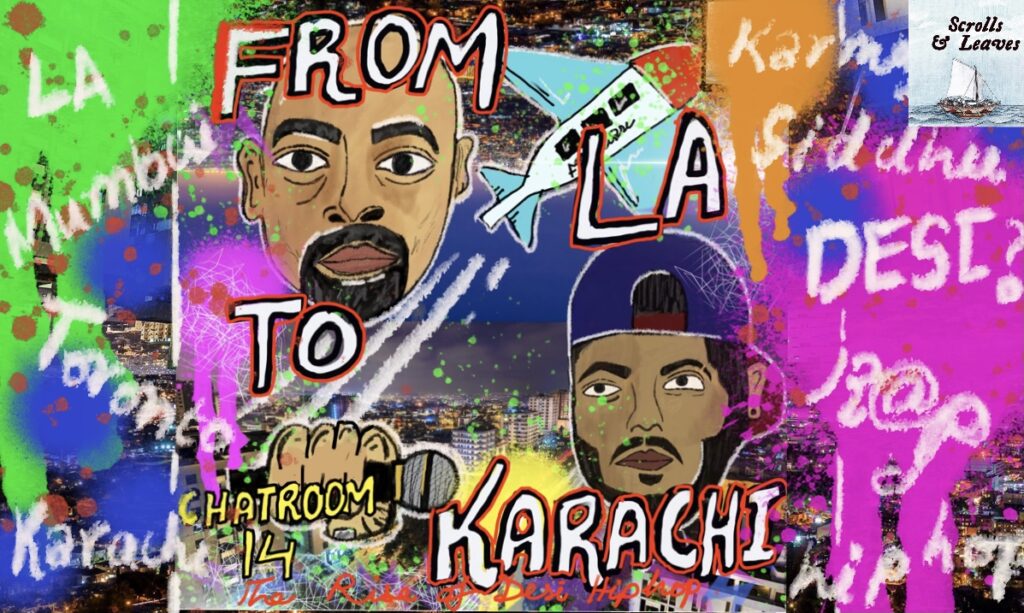The Rise and Evolution of Indian Desi Hip Hop

Indian Desi Hip Hop is more than just a genre of music; it’s a cultural movement. It’s a blend of traditional Indian sounds with the beats and rhythms of Hip Hop, creating something unique and powerful. Over the past few decades, Indian Desi Hip Hop has grown from an underground movement to a mainstream phenomenon, capturing the hearts of millions across the globe. Let’s explore the origins, rise, and impact of Indian Desi Hip Hop, tracing how it became a voice for the youth and a reflection of modern Indian society.
Visit here to get cool DHH tshirts : Raptees
The Beginnings of Indian Desi Hip Hop
Indian Desi Hip Hop began in the late 1990s and early 2000s, inspired by the global Hip Hop culture. As Hip Hop started gaining popularity worldwide, Indian artists began to experiment with its elements, infusing them with local flavors. The initial phase saw a mix of languages, with English often blending with Hindi, Punjabi, and other regional languages. This fusion created a new sound that resonated with young Indians who were eager to embrace something fresh and relevant to their own experiences.
The pioneers of Indian Desi Hip Hop were mostly independent artists who used the internet as their primary platform. They shared their music on platforms like YouTube, gaining a following among the youth. These early artists were heavily influenced by American Hip Hop but were determined to create something that spoke to their own culture and experiences.
The Rise of Regional Desi Hip Hop
One of the most exciting aspects of Indian Desi Hip Hop is its regional diversity. As the genre grew, artists from different parts of India started to incorporate their own languages, dialects, and local music traditions into their Hip Hop tracks. This regionalization of Desi Hip Hop added depth and richness to the genre, making it more inclusive and representative of India’s vast cultural diversity.
Punjabi Hip Hop, for instance, became immensely popular, with artists like Bohemia leading the way. Bohemia, often referred to as the pioneer of Desi Hip Hop, brought Punjabi rap to the forefront, mixing it with Western beats. His success paved the way for many other Punjabi artists who continue to dominate the Indian Hip Hop scene.
In addition to Punjabi, Hindi, Marathi, Tamil, Bengali, and other regional languages began to find their way into Hip Hop. This shift allowed artists to connect more deeply with their local audiences, making Indian Desi Hip Hop a truly pan-Indian movement.
Mainstream Success and Cultural Impact
The early 2010s marked a significant turning point for Indian Desi Hip Hop. What was once an underground movement began to gain mainstream recognition. This shift was largely driven by the growing popularity of social media, which gave artists a direct line to their audiences. Platforms like YouTube, Instagram, and SoundCloud became crucial for artists to share their music, build their brands, and connect with fans.
The commercial success of Indian Desi Hip Hop reached new heights with the release of the Bollywood film Gully Boy in 2019. The movie, inspired by the lives of Mumbai-based rappers Divine and Naezy, brought Indian Desi Hip Hop to the national stage. The film’s soundtrack, filled with raw and authentic Hip Hop tracks, became a massive hit, and suddenly, the whole country was talking about Desi Hip Hop.
This mainstream success helped to solidify Indian Desi Hip Hop as a powerful cultural force. It became a way for young people to express their frustrations, dreams, and realities. The lyrics often tackle social issues, such as poverty, corruption, and inequality, making the genre not just a form of entertainment but also a tool for social commentary.
The Future of Indian Desi Hip Hop
Indian Desi Hip Hop shows no signs of slowing down. As more artists emerge from different parts of the country, the genre continues to evolve and diversify. The future of Indian Desi Hip Hop is likely to see even more experimentation with sounds, styles, and languages.
Additionally, the global influence of Indian Desi Hip Hop is growing. Artists are collaborating with international musicians, and the genre is gaining recognition beyond India’s borders. This cross-cultural exchange is helping to spread Indian Desi Hip Hop to new audiences around the world.
Conclusion
Indian Desi Hip Hop has come a long way from its humble beginnings. It has grown from a niche genre to a mainstream cultural movement that resonates with millions. By blending traditional Indian music with the beats of Hip Hop, artists have created something unique and powerful. The future looks bright for Indian Desi Hip Hop, as it continues to evolve, inspire, and influence. Whether you’re a longtime fan or just discovering the genre, there’s no denying the impact and significance of Indian Desi Hip Hop in today’s music landscape.

Wow! I never knew Bohemia was the OG!!